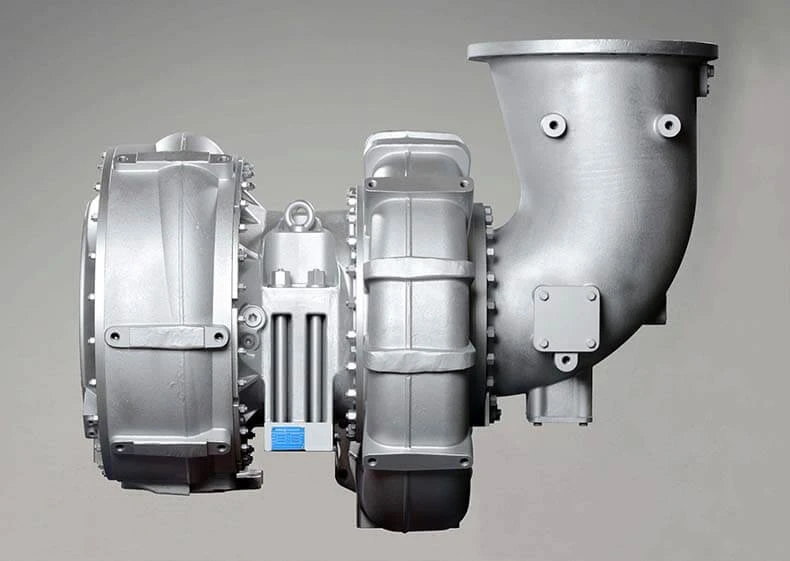Contact us
Kompressorenbau Bannewitz GmbH (KBB) has decided that it will no longer have wastewater from its various processes collected by a waste management company. Instead, the Saxon company has opted to deploy a VACUDEST vacuum distillation system from H2O GmbH. The resulting annual savings amount to €40,000. What impression has the new system for zero liquid discharge production left at KBB GmbH? An interview with Michael Stitterich, Production Engineer with a focus on factory planning and technical cleanliness at KBB GmbH.
Mr Stitterich, what can you tell us about Kompressorenbau Bannewitz GmbH? What are its core areas of business?
We have produced exhaust-gas turbochargers for diesel and gas engines for over 60 years now. We are located in Bannewitz, Saxony, not far from Dresden, and we manufacture products for ship, locomotive and industrial engines. Since 1953, we have manufactured over 50,000 KBB turbochargers, which are used to reduce the pollution content in exhaust gases and increase engine efficiency. Our 170 employees supply a global network of 41 independent service stations for the development, production and maintenance of exhaust-gas turbochargers.
This must mean that your production processes produce a wide range of idustrial wastewaters, with different compositions?
That’s right. Cooling lubricant emulsions accrue from turning machines and machining centres on our production line. This accounts for around two-thirds of the total volume. The remaining third consists of used washing and rinsing water.
This process water accumulates in roughly equal portions from our single chamber washing systems used during production and from the ultrasonic washing plants for turbocharger maintenance. For this reason, it was also important for us to find a good integrated solution to deal with all of these wastewater streams.

Exhaust-gas turbochargers like this can be manufactured with even greater cost efficiency in the future by recycling used process water.
What are the main reasons behind your decision to treat your process wastewater instead of dispose of it?
Our design is driven by two primary concerns. Previously, we disposed of all our wastewater. Using the VACUDEST system allowed us to achieve savings of around €40,000 annually on our relatively high disposal costs.
Our calculations showed an amortisation period of only 2.3 years for the entire VACUDEST system.
The second reason behind our decision was a desire to make a positive contribution to the environment. We recycle the distillate to prepare the cooling lubricants and washing and rinsing water. As a result, we barely need fresh water anymore.
Thanks to VACUDEST, we now dispose of less than ten per cent of the wastewater as a concentrate. Our disposal partner is therefore needed less often, thereby also reducing both traffic congestion and CO2 emissions.
Why did you opt for vacuum distillation?
Chemical/physical separation requires additional chemicals and recycling the purified wastewater is questionable. Vacuum distillation really scores points here. It reliably treats all of our many diverse wastewater streams, so that the water can be recycled in our processes.
Why did you specifically decide on a VACUDEST evaporator?
Above and beyond the benefits I already mentioned, the VACUDEST system is a convincing choice due to its ease of use.
The equipment is fully automatic and can even run over the weekend, while daily maintenance work takes less than half an hour.
We also had a generally positive impression of H2O as a company. Their interaction with our company was very professional, which played an important role in the decision-making process.
How satisfied are you with the progression of the project and your new wastewater treatment system?
Very satisfied. Everything went well across all project phases, from planning right through to execution. At the outset, the wastewater sampling carried out in the H2O application centre for zero liquid discharge production was very helpful to evaluate the economic viability of the project. The discussion with the current operator of a system as part of a visit to a reference facility was very informative for us. It helped convince us that this was the right decision.
Let me say this about our initial experiences with the system:
In the initial stage, the training provided by H2O at our site got us familiar with the system quite quickly. The control systems are self-explanatory and require a minimal amount of effort to operate. Personally, I appreciated direct contact with the service technician, since I was able to later clarify any remaining questions with him directly.
In general, we always had a contact person and our special request for a ‘traffic light filling level indicator’ was no problem.
Thank you very much for the interview, Mr Stitterich. It’s fantastic that you have been able to achieve zero liquid discharge production and thereby contribute environmental protection.

You have questions on our VACUDEST systems?
Kindly contact us!
Your contact is:
Thomas Dotterweich
Senior Sales Engineer
+49 7627 9239-306
thomasm.dotterweich@h2o-de.com
You need consumables, spare parts or a maintenance date?
We will be pleased to assist you!
Your contact is:
Carles Fité
Technical Customer Support
+49 7627 9239-888
carles.fite@h2o-de.com
You want to be part of our team and create the wastewater-free future with us?
We will tell you how!
Your contact is:
Bettina Böhringer
Human Resources
+49 7627 9239-201
career@h2o-de.com